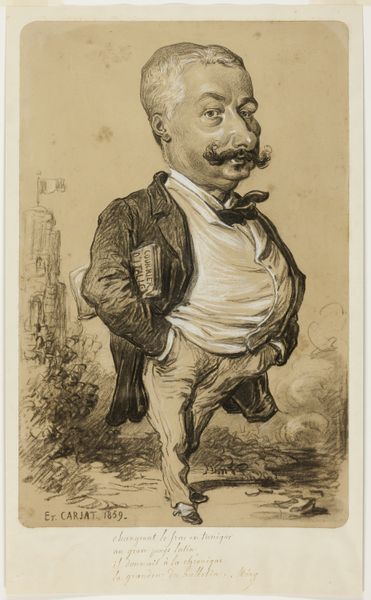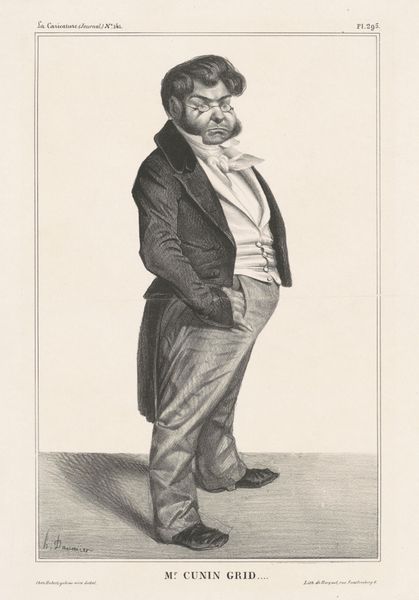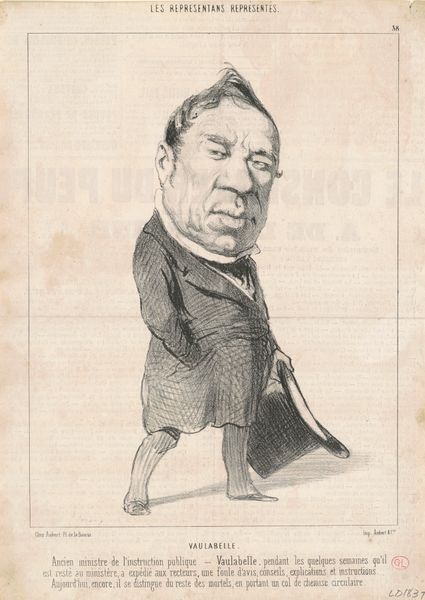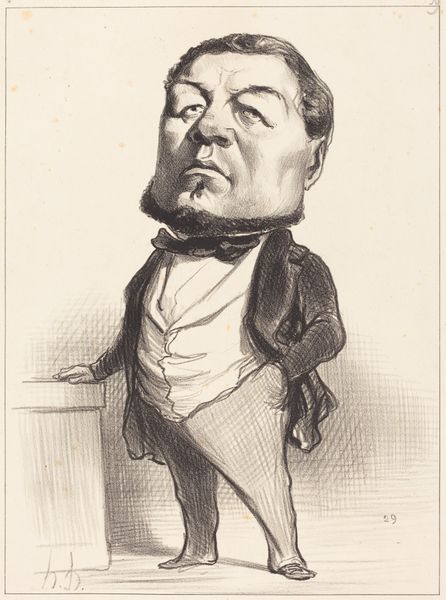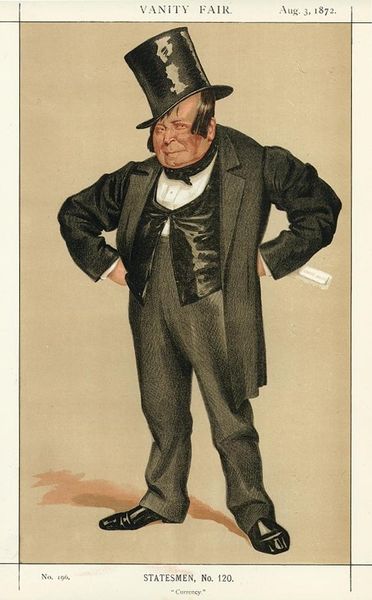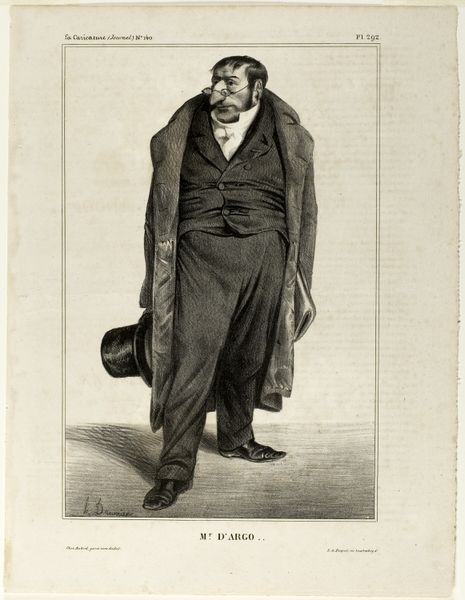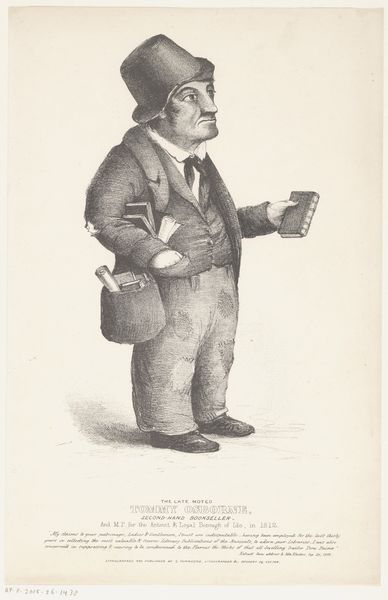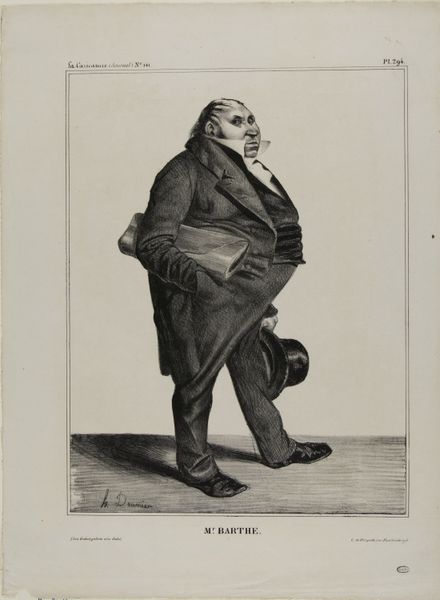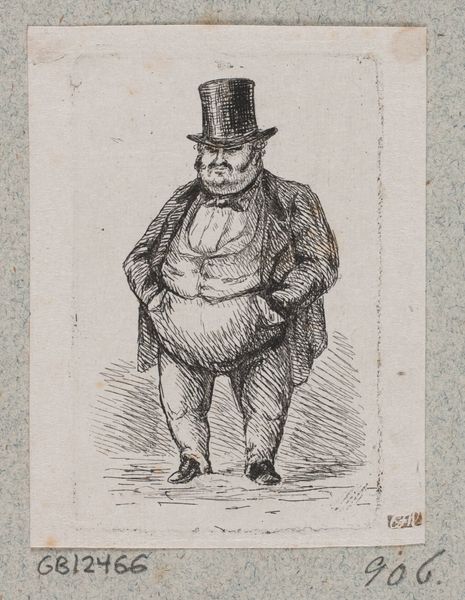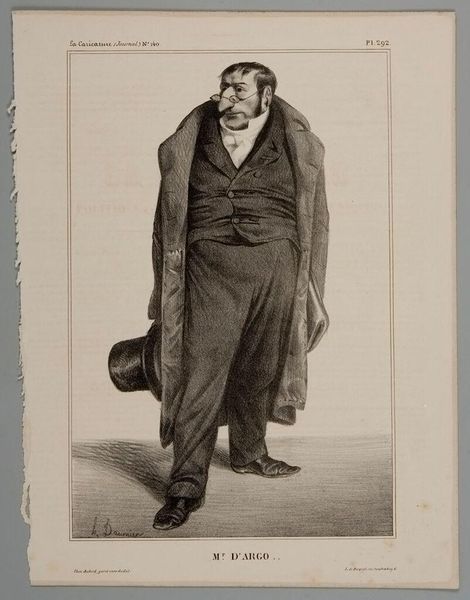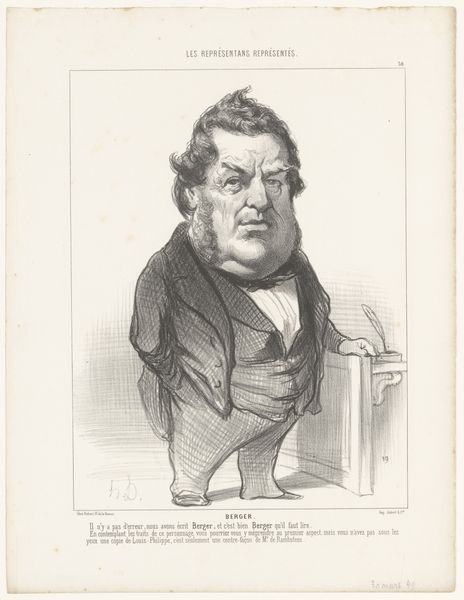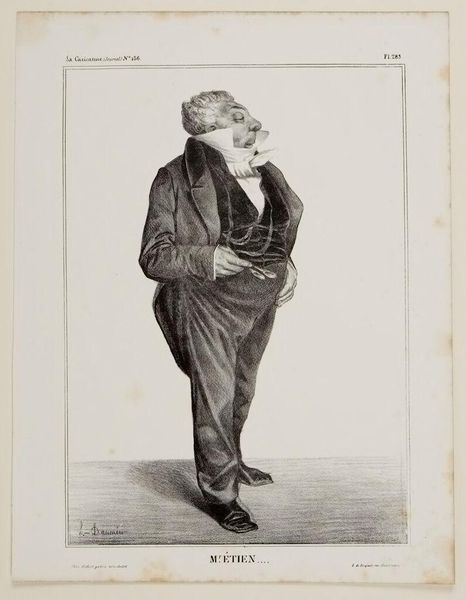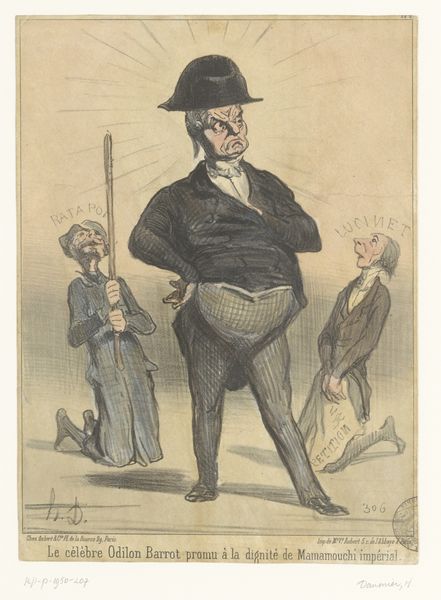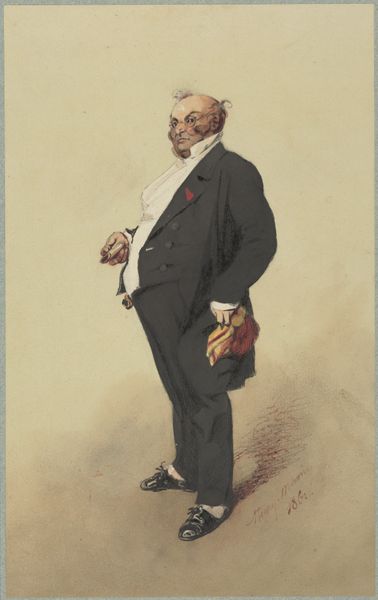
drawing, print, graphite
#
portrait
#
drawing
# print
#
caricature
#
caricature
#
romanticism
#
graphite
#
portrait drawing
Copyright: National Gallery of Art: CC0 1.0
Editor: So, this is Honoré Daumier's "Prince Lucien Murat," made in 1849, using graphite. It looks like a caricature. There's almost a haughtiness to his expression, a defiance perhaps? What can you tell me about it? Curator: Indeed, Daumier uses caricature to deliver incisive social commentary. This portrait, ostensibly of Prince Murat, is less about the individual and more about the system that enabled him. How do you read his exaggerated features in relation to the social power he embodies? Editor: Well, his size is exaggerated and… he looks sort of… self-important. Is Daumier trying to make a broader comment on class or privilege? Curator: Absolutely. Consider the historical context. This was created during a period of social upheaval and revolution in France. The July Monarchy had fallen and there was widespread disillusionment with the elite. Daumier consistently critiqued the bourgeoisie and the aristocracy. His caricatures were potent tools for social critique, wouldn’t you agree? Editor: I see that. So, this isn't just a funny picture, but a criticism of a specific social class at a volatile moment in history. The 'haughtiness' I picked up on... Curator: ...becomes a symptom of systemic inequality, manifested in one man's self-assured demeanor. What do you think about how Daumier uses humour to highlight the darker aspects of society? Editor: I suppose using humor would make his critique more widely accessible and subversive? I hadn't considered that approach initially! Curator: Precisely! Daumier’s art reminds us that aesthetics and politics are inseparable. Every portrait tells a story not only of the sitter, but also of the world that shaped him and that he helped to shape. Editor: It’s amazing how a simple drawing can carry so much historical weight and critical commentary.
Comments
No comments
Be the first to comment and join the conversation on the ultimate creative platform.
